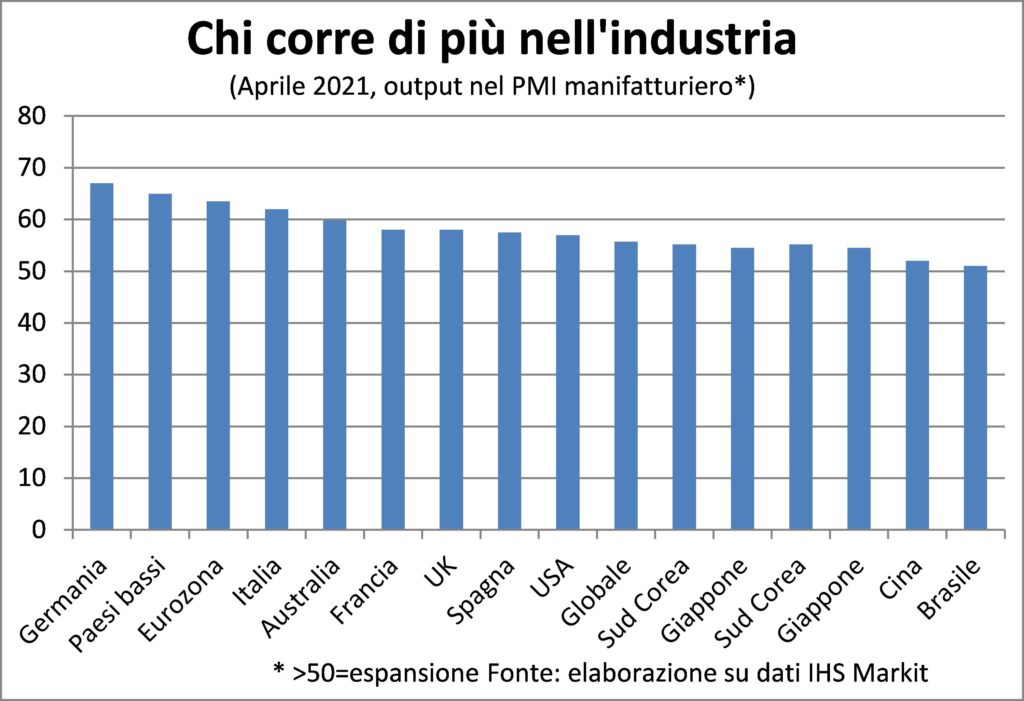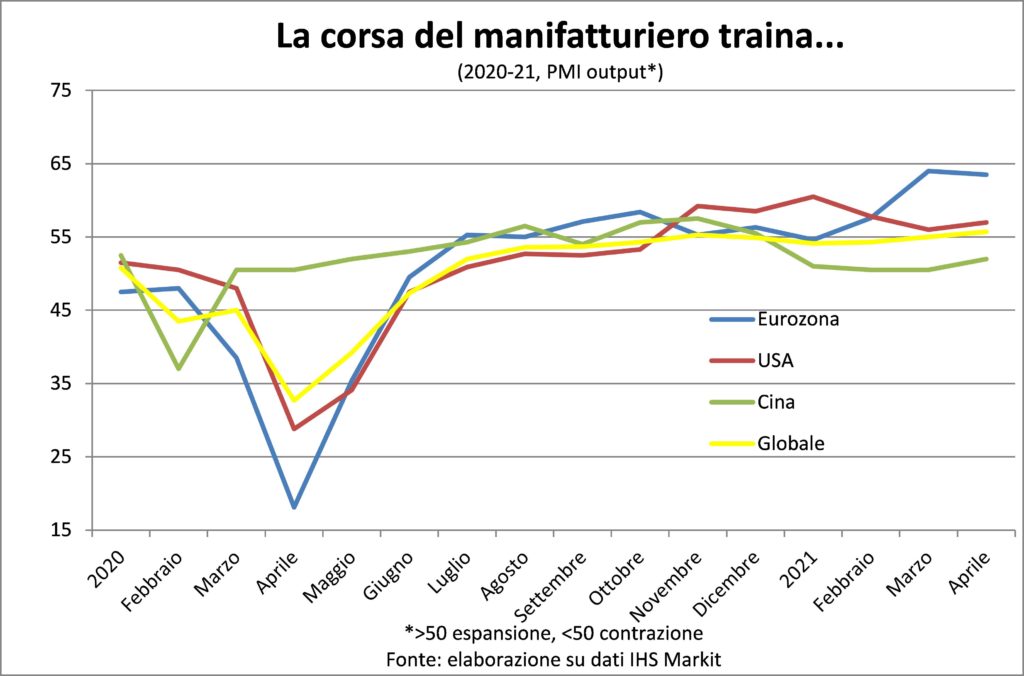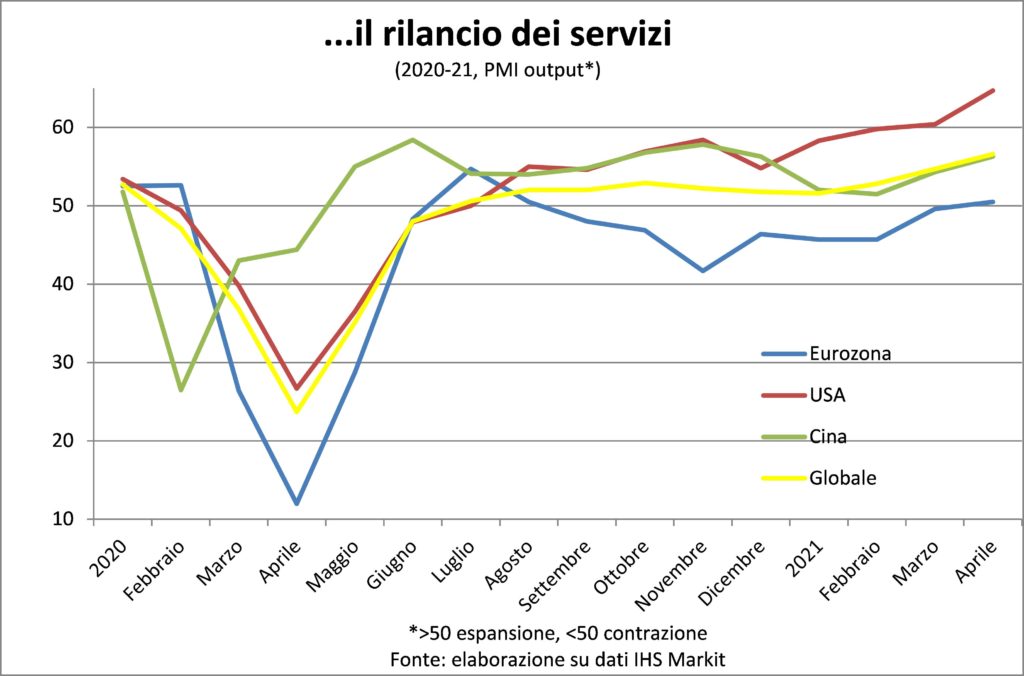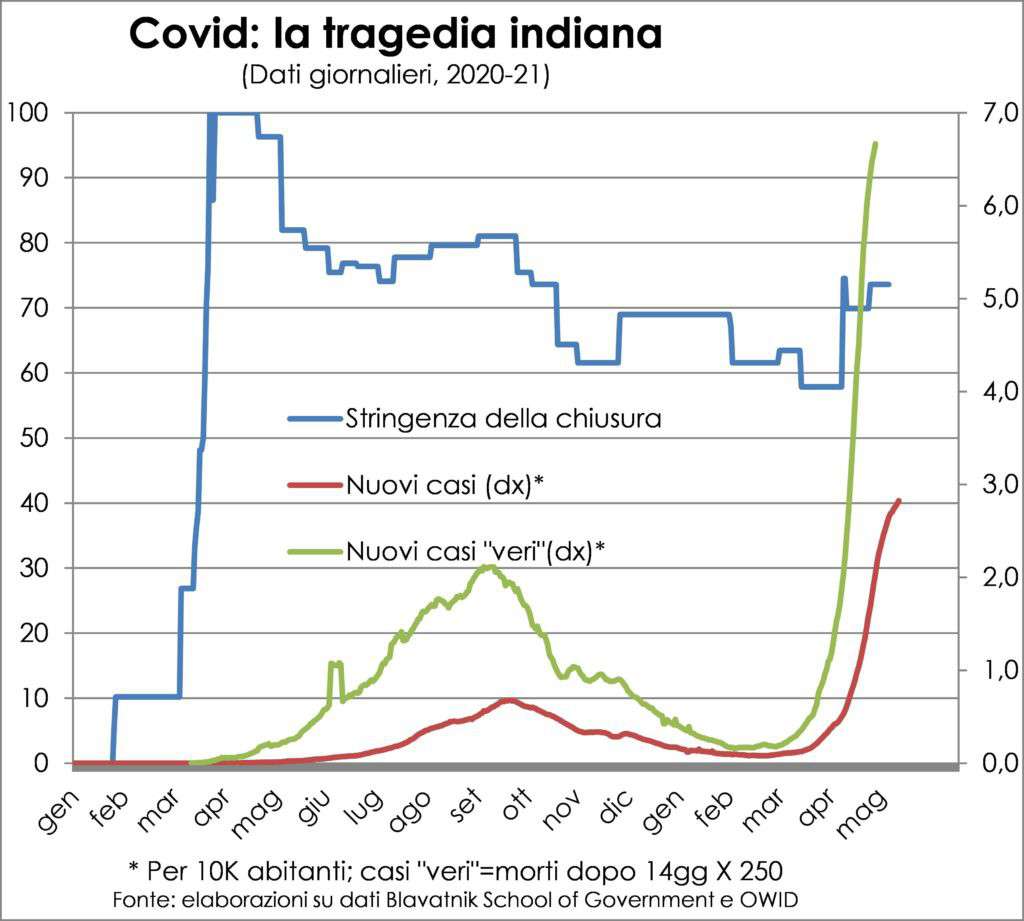The economy at the time of Covid-19 (and its variants '20 and '21) is an upside down world, worthy of the best pages of Alice in Wonderland. A world where i household consumption they are the component of the expenditure that has suffered the most. In normal recessions they suffer less.
For example, household spending in Italy in 2020 it fell more than 10% in volume, far more than it did in the previous two recessions combined. The same happened in the other large industrial nations. While investments, which are normally much more cyclical, have “only” fallen by 9%, when in 2007-09 and 2010-13 they had plunged by 15% and 19%, respectively.
Moreover, the consumptions are the last to return to the new normal (which will in any case involve coexistence with the virus), while they are usually the first to recover lost ground. A couple more numbers to clarify: after two quarters from the low reached in the 2020 recession, Italian household spending was still 10,2% below the previous peak, while gross fixed investments were 2% below. At the same time as the recovery following the 2010-2013 recession (much longer and with a very slow recovery), the former were down by 7,2% and the latter by 18,7%.
However, when consumption accelerates, and it is starting to do so thanks to the warm season (which the virus does not tolerate) and vaccination, they will trigger the turbo in growth.
For three good reasons: accumulated savings, decompression of impulses to spend and multiplication of the multiplier. The first two are simple enough to explain.
Il savings has strongly increased since the first lockdown. In the set of families (albeit with huge inequalities, as told in the Lancet of April). During the crisis, families were unable to spend freely because some activities were, and largely still are, banned. Each of us knows well, having experienced it on our own skin, what we are talking about here.
But it's worth noting that it was not the reduction in spending power that slackened consumption, which even for many people there was indeed: in fact, theincidence of poverty it increased by almost two percentage points (three times the speed of the previous crisis!). Anywaypublic aid they supported the family income with 61 billion euros (processed by REF Ricerche), which thus limited the drop to 32 billion (otherwise it would have tripled). While consumer spending decreased by 117 billion. So that savings rose by 85 billion (for a total savings of 178 billion, against 93 in 2019).
Adding the first two quarters of 2020, excess savings amounted to 120 billion. If that excess were spent, consumption would increase by more than 12% in addition to what would normally happen through the usual dynamics of the increase in income, which will also be strong thanks to the reopening and the return to activity of hundreds of thousands of businesses.
Obviously this will not be the case, because a large part of this money has been used in securities and real estate investments. And another part will be. But there is still a large sum to spend. And what is true for Italy is true for all other advanced countries. With stimulus transmission effects from one to another.
La decompression of the impulses to spend it's less long to tell. A fulminant phrase from Abbot Galiani, a proto-economist originally from Abruzzo, is enough: «Utility I call the attitude that a thing has to give us happiness. Man is a compound of passions which move him with unequal strength. Satisfying them is pleasure. The purchase of pleasure is happiness" (Of the Coin.
With all due respect to those who preach pauperism, no one is immune from consumption as a form of satisfaction. You can change shape and object, and sums and attention put into shopping. One can be more or less compulsive. But that deep psychological force that drives us to spend remains. A force that has long been compressed in the pandemic. Which will now snap like a spring. Perhaps "we were not made [we were] to live like brutes", but certainly to consume.
La multiplication of multiplier recalls a famous aria from The Barber of Seville, by Rossini: «In the end it overflows and bursts,/It spreads, it doubles/And produces an explosion/Like a cannon shot». The multiplier usually works quite the opposite: like thunder whose echo dies away in the distance inside a steep alpine valley. In fact, it is the mechanism that explains and calculates the overall effects on demand and on GDP of an independent increase in expenditure with respect to present income; as can be a new investment of a company or a state.
This investment produces a total increase in income and demand which is a multiple (precisely) of the original one. Because it corresponds to an increase in production and therefore in income which is in turn spent, generating more production-income-expenditure. Until there is no more income increase, because in each step some of the additional income goes into savings, some more into taxes, some more into imports, i.e. production and income from other countries. In a progressive weakening of the thrust.
The value of the multiplier is important and depends on many things. Here we are interested in emphasizing its dependence on propensity to save: the higher it is, the lower the multiplier, because the faster the initial boost is exhausted through the increase in savings. In the crisis, the propensity to save has increased a lot. In Italy it doubled (from 8,2% to 15,8%), elsewhere it more than doubled (from 7,5% to 16,3% in the USA). This cut the multiplier in half. The opposite will happen now. So the economy will accelerate even faster.
The increase in consumption will go towards those services which, involving aggregation, had been banned in the closures. While until now, to vent the aforementioned drive to consume, families had given themselves over to buying household goods and, to a lesser extent, means of transport (disdaining, however, articles of clothing). There will, therefore, be a virtual and virtuous passing of the baton.



Virtuous because it will involve the most penalized people, in terms of employment and income, since the pandemic recession. And virtuous because it will ease the pressure of demand on supply of those goods which are now in short supply, such as microchips. Which are unimaginably small (one twenty-thousandth of the thickness of a hair) yet of great importance, so much so that their scarcity acts like grains of sand in the gears of the economy: creating friction and slowing down movements.
Finally, three annotations related to the progress of the epidemic. First, only mass vaccinations, leading to very high coverage of over 80-85%, can minimize the risks of rapid re-spread and closures. The case of the Seychelles, which with 60% of vaccinated people had to close again to stop a new spread, shows us to raise the bar of the vaccinated population to eliminate, or almost eliminate, the risk of contagion (moreover, an article by Nature explains that community immunity is unlikely to ever be achieved).
According to total vaccination is a mirage for very populous countries. As the tragic case of India teaches. The result is that there the virus will be able to spread and mutate at will. International travel will be held back for a long time. Distributing massive quantities of vaccines to those populations is a business rather than a gesture of solidarity. But the correct path is not the suspension of patent rights, but agreements to produce in those countries, wherever possible.

Third and last, vaccination will become annual prophylaxis. It follows that pharmaceutical spending is set to rise. Occupying an increasingly large slice of our private and public budgets. It was a trend already underway due to both the aging of the population and the increase in per capita income in emerging countries. But this is no longer conjuncture; it's a megatrend.
Read the Hands of the Economy of 8 May 2021:
- Economy: recovery with the consumption turbo in sight, the virus willing
- Household spending ready to rocket
- Rates are sniffing recovery, record stock exchanges and a steady dollar





